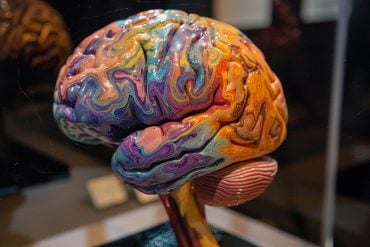TAU maps precise triggers that activate and neutralize brain cell networks.
The idea of mapping the brain is not new. Researchers have known for years that the key to treating, curing, and even preventing brain disorders such as Alzheimer’s disease, epilepsy, and traumatic brain injury, is to understand how the brain records, processes, stores, and retrieves information.
New Tel Aviv University research published in PLOS Computational Biology makes a major contribution to efforts to navigate the brain. The study, by Prof. Eshel Ben-Jacob and Dr. Paolo Bonifazi of TAU’s School of Physics and Astronomy and Sagol School of Neuroscience, and Prof. Alessandro Torcini and Dr. Stefano Luccioli of the Instituto dei Sistemi Complessi, under the auspices of TAU’s Joint Italian-Israeli Laboratory on Integrative Network Neuroscience, offers a precise model of the organization of developing neuronal circuits.
In an earlier study of the hippocampi of newborn mice, Dr. Bonifazi discovered that a few “hub neurons” orchestrated the behavior of entire circuits. In the new study, the researchers harnessed cutting-edge technology to reproduce these findings in a computer-simulated model of neuronal circuits. “If we are able to identify the cellular type of hub neurons, we could try to reproduce them in vitro out of stem cells and transplant these into aged or damaged brain circuitries in order to recover functionality,” said Dr. Bonifazi.
Flight dynamics and brain neurons
“Imagine that only a few airports in the world are responsible for all flight dynamics on the planet,” said Dr. Bonifazi. “We found this to be true of hub neurons in their orchestration of circuits’ synchronizations during development. We have reproduced these findings in a new computer model.”

According to this model, one stimulated hub neuron impacts an entire circuit dynamic; similarly, just one muted neuron suppresses all coordinated activity of the circuit. “We are contributing to efforts to identify which neurons are more important to specific neuronal circuits,” said Dr. Bonifazi. “If we can identify which cells play a major role in controlling circuit dynamics, we know how to communicate with an entire circuit, as in the case of the communication between the brain and prosthetic devices.”
Conducting the orchestra of the brain
In the course of their research, the team found that the timely activation of cells is fundamental for the proper operation of hub neurons, which, in turn, orchestrate the entire network dynamic. In other words, a clique of hubs works in a kind of temporally-organized fashion, according to which “everyone has to be active at the right time,” according to Dr. Bonifazi.
Coordinated activation impacts the entire network. Just by alternating the timing of the activity of one neuron, researchers were able to affect the operation of a small clique of neurons, and finally that of the entire network.
“Our study fits within framework of the ‘complex network theory,’ an emerging discipline that explores similar trends and properties among all kinds of networks — i.e., social networks, biological networks, even power plants,” said Dr. Bonifazi. “This theoretical approach offers key insights into many systems, including the neuronal circuit network in our brains.”
Parallel to their theoretical study, the researchers are conducting experiments on in vitro cultured systems to better identify electrophysiological and chemical properties of hub neurons. The joint Italy-Israel laboratory is also involved in a European project aimed at linking biological and artificial neuronal circuitries to restore lost brain functions.
Contact: George Hunka – American Friends of Tel Aviv University
Source: American Friends of Tel Aviv University press release
Image Source: The image is adapted from the American Friends of Tel Aviv University press release
Original Research: Full open access research for “Clique of Functional Hubs Orchestrates Population Bursts in Developmentally Regulated Neural Networks” by S Stefano Luccioli, Eshel Ben-Jacob, Ari Barzilai, Paolo Bonifazi, and Alessandro Torcini in PLOS Computational Biology. Published online September 25 2014 doi:10.1371/journal.pcbi.1003823
Clique of Functional Hubs Orchestrates Population Bursts in Developmentally Regulated Neural Networks
It has recently been discovered that single neuron stimulation can impact network dynamics in immature and adult neuronal circuits. Here we report a novel mechanism which can explain in neuronal circuits, at an early stage of development, the peculiar role played by a few specific neurons in promoting/arresting the population activity. For this purpose, we consider a standard neuronal network model, with short-term synaptic plasticity, whose population activity is characterized by bursting behavior. The addition of developmentally inspired constraints and correlations in the distribution of the neuronal connectivities and excitabilities leads to the emergence of functional hub neurons, whose stimulation/deletion is critical for the network activity. Functional hubs form a clique, where a precise sequential activation of the neurons is essential to ignite collective events without any need for a specific topological architecture. Unsupervised time-lagged firings of supra-threshold cells, in connection with coordinated entrainments of near-threshold neurons, are the key ingredients to orchestrate population activity.
“Clique of Functional Hubs Orchestrates Population Bursts in Developmentally Regulated Neural Networks” by S Stefano Luccioli, Eshel Ben-Jacob, Ari Barzilai, Paolo Bonifazi, and Alessandro Torcini in PLOS Computational Biology, September 25 2014 doi:10.1371/journal.pcbi.1003823






